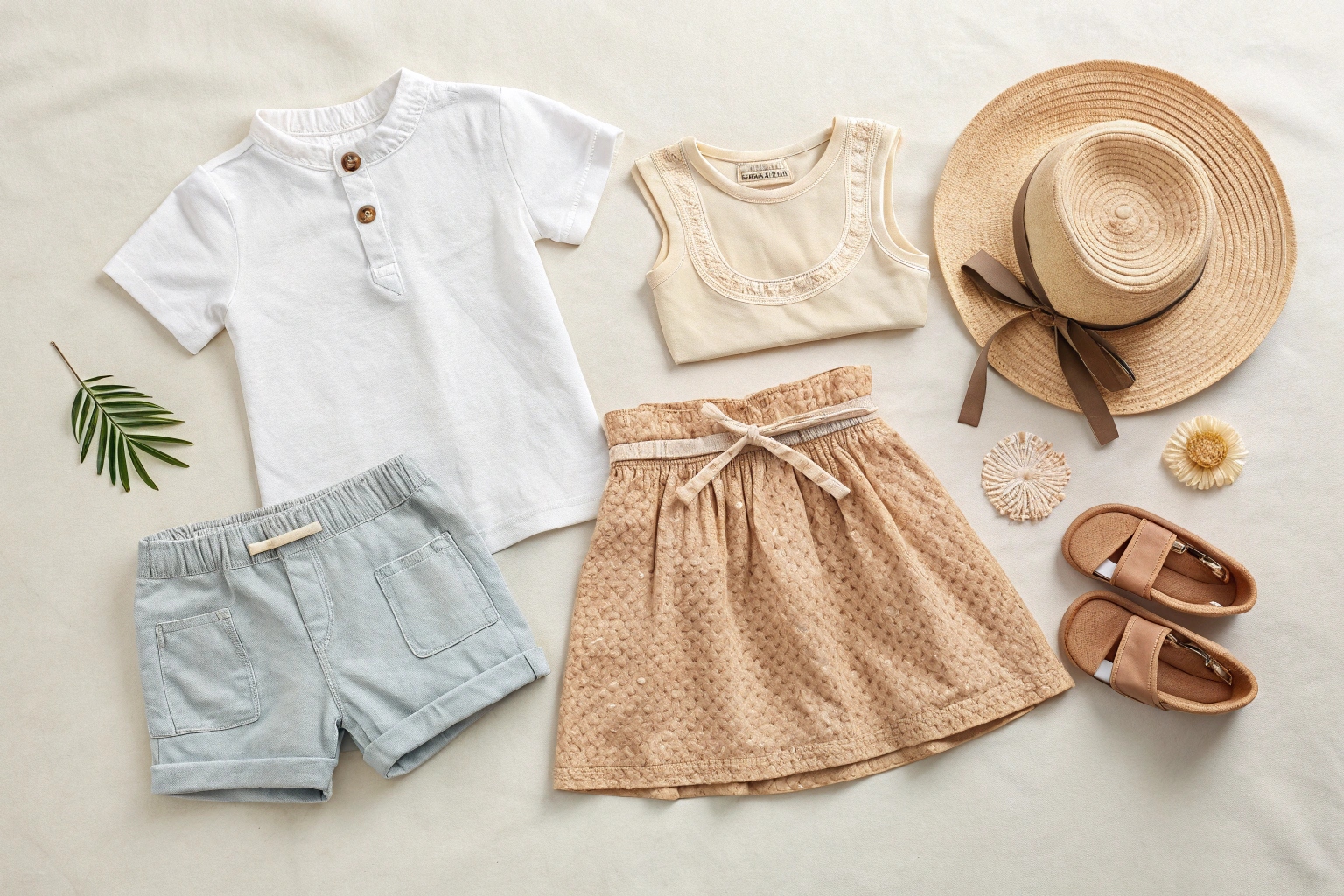Most parents shop fast, not smart—ending up with piles of clothes their kids outgrow or barely wear.
Educating parents about capsule wardrobes helps them buy fewer, better pieces. This leads to less clutter, more savings, and smarter clothing choices for growing children.
For those of us manufacturing or selling capsule collections, clear and honest communication is the key to winning parental trust. But how do we explain the concept in a way that sticks? Let’s break it down.
Key Talking Points to Explain Capsule Wardrobes to Parents?
Parents don’t always get why fewer clothes can be better—especially when kids seem to need something new every month.
When explaining capsule wardrobes, focus on the benefits: time saved, money saved, and less daily stress. Use real-life scenarios to make it relatable.
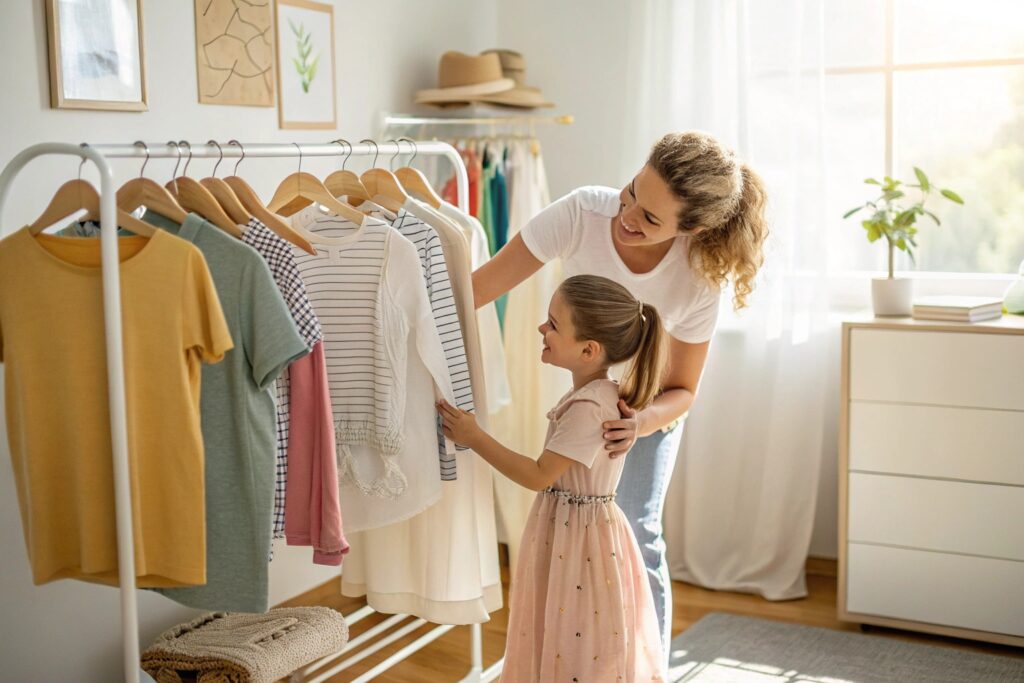
What simple analogies or everyday examples can help busy parents instantly understand what a capsule wardrobe is and why it works?
Try comparing it to meal prepping or toy rotation. For example, a capsule wardrobe is like meal prepping for the week—you have a set of ready-to-go outfits that all mix and match. Or like rotating toys: fewer choices, more clarity. I’ve had moms nod in agreement when I say, “Imagine opening the closet and every piece works together.”
How can I use visuals or layout guides to make the concept feel less abstract and more practical for first-time capsule parents?
Visual guides help a lot. That’s why we include printed mix-and-match outfit charts when we ship our capsule kits from Fumao Clothing. These show parents how five tops and five bottoms create 25 looks. We also use color-coded lookbooks with sections like “school,” “play,” and “special occasions.” Parents love anything that saves thinking time on hectic mornings.
Clear talking points and helpful tools are the foundation for making capsule fashion accessible. If we don’t explain it in their language, we lose them at hello.
Benefits of Capsule Clothing for Kids’ Growth and Play?
Fast-growing kids outgrow clothes too fast. So why give them a cluttered wardrobe they’ll barely use?
Capsule wardrobes adapt better to growth spurts and simplify outfit planning. They support comfort, freedom of movement, and reduce the pressure of frequent shopping.
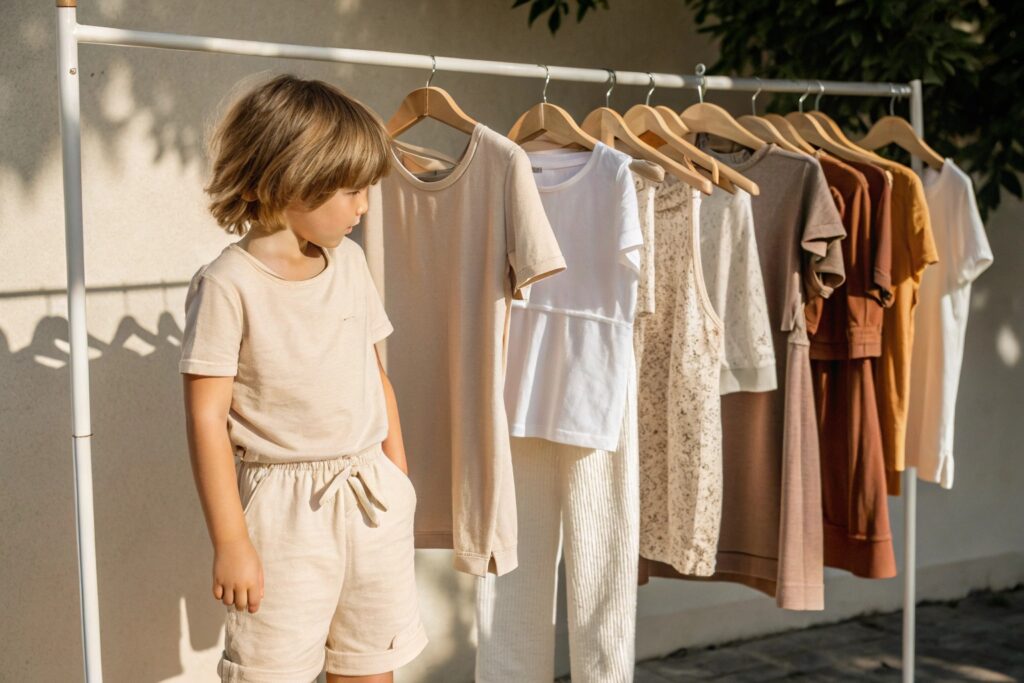
How can capsule wardrobes help parents deal with kids’ fast growth cycles and constant size changes?
Capsule collections focus on essentials that fit longer—think elastic waistbands, stretch fabrics, and adjustable hems. We design many of our Fumao kidswear lines with these features. A good capsule wardrobe should cover at least two size stages. This saves parents from constantly buying new sets and reduces waste.
Can capsule wardrobes support active play and exploration better than trend-based or decorative outfits?
Yes. Play should come before polish. We use durable, washable fabrics and comfort-first designs in all our capsule items. That means soft seams, breathable cotton, and no scratchy tags. Parents notice when their kids can crawl, climb, and run without tugging at sleeves or overheating. We often hear from customers: “My kid asks for this set every time.”
Capsule fashion isn’t just minimalist—it’s practical. And practicality is what modern parents crave.
How does capsule design improve organization and morning routines for both kids and parents?
A typical morning for many families is chaos. But when all clothes match and are easy to reach, kids can dress themselves faster. Here's what a week looks like with a capsule set:
| Day | Outfit Combo | Notes |
|---|---|---|
| Monday | Navy pants + white tee | School day favorite |
| Tuesday | Khaki shorts + stripe top | Park-friendly combo |
| Wednesday | Denim joggers + print tee | Casual, comfy day outfit |
| Thursday | Gray pants + red top | Bright colors for photo day |
| Friday | Repeat Monday combo | Still looks fresh, re-used |
One drawer. Five outfits. Zero fuss.
How to Market Capsule Wardrobes to Eco-Conscious Parents?
Today’s parents want to do better—for their kids and for the planet. But they also want it to be simple.
Highlight sustainability benefits clearly: fewer items, less waste, longer wear. Show how capsule wardrobes reduce overproduction and save water, energy, and materials.
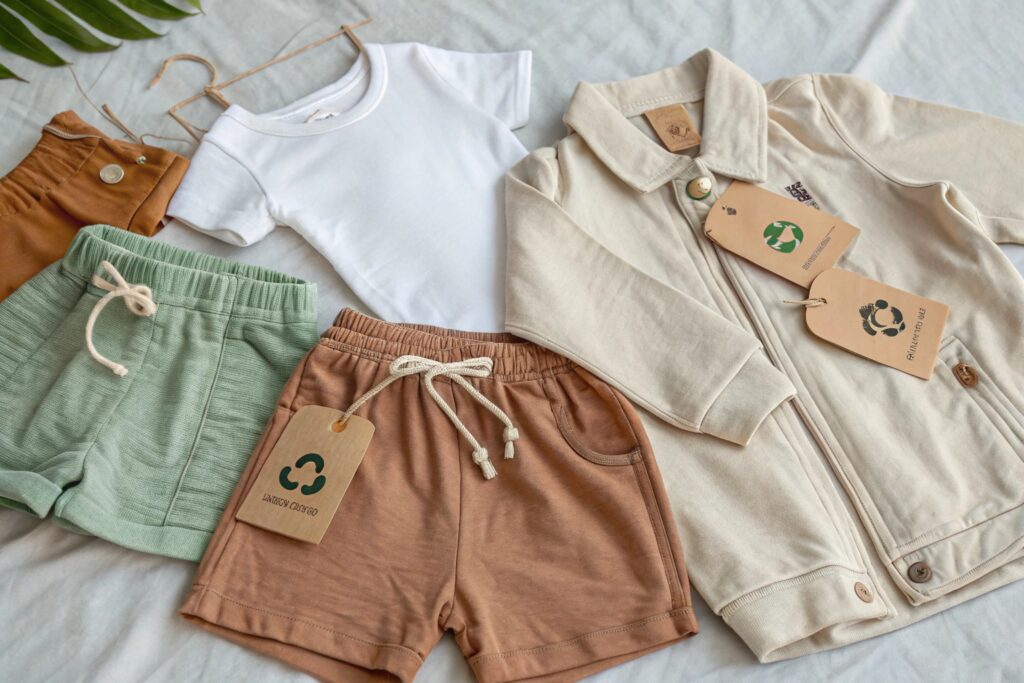
What stats or environmental benefits are most persuasive to parents who care about sustainability but don’t want to sacrifice convenience?
Tell them the truth—but keep it short. For example:
- “Each capsule kit reduces clothing waste by up to 60%.”
- “Washing fewer clothes saves an average of 100 gallons of water per week.”
- “Fumao’s capsule pieces are made with 50% less dye and packaged plastic-free.”
Eco-conscious buyers also care about garment lifecycle. So we add repair kits and offer resale incentives. Letting them pass on outgrown items—or return them for store credit—makes sustainability easy.
How can I make sustainable capsule clothing feel stylish and modern, not like a compromise or downgrade?
Design is the deal-breaker. That’s why we work with minimal, timeless cuts and flexible colors—like sage, sand, or navy. These go with anything, so parents don’t feel boxed in. Our capsule drops often come with curated accessories like hats or leggings, so the full look feels fresh and curated.
Packaging also matters. We use recycled boxes, seed-paper tags, and write thank-you notes by hand. These small touches build brand love—and remind parents they’re part of something bigger than just shopping.
Common Misconceptions Parents Have About Capsule Fashion?
Many parents think capsule fashion means boring colors, bland styles, or too few choices for expressive kids.
The biggest misconceptions about capsule wardrobes are that they’re limiting, expensive, or only for minimalist families. In truth, they’re flexible, affordable, and work for any lifestyle.
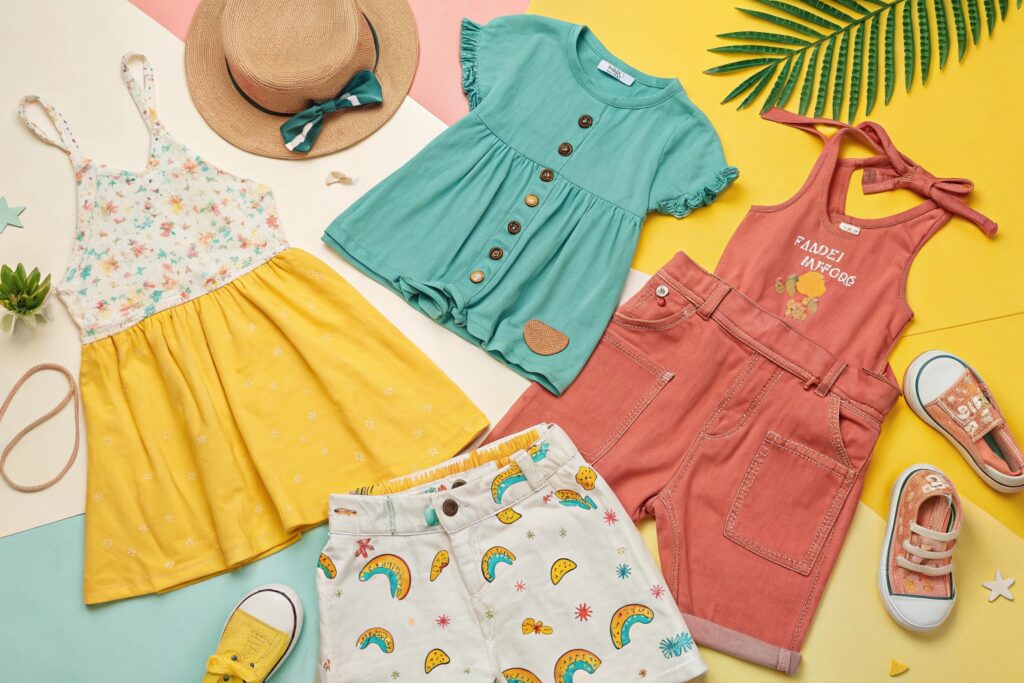
What are the most common myths about capsule wardrobes, and how can I respond to them clearly and respectfully?
Here’s a table I often use during webinars or at trade shows when buyers ask how to explain capsules to end customers:
| Misconception | Truth |
|---|---|
| “Capsule wardrobes are too plain” | Ours include prints, textures, and color options |
| “Kids need more outfit choices” | 10 pieces = 25+ outfits if styled right |
| “It costs more upfront” | Fewer items = lower total spend over 6 months |
| “It’s for trendy Instagram moms” | Works for every household—city, suburb, or rural |
One dad told me he thought capsule meant “hipster-only,” until he saw how his daughter could wear the same leggings for dance, play, and visits to grandma.
How do I assure hesitant parents that capsule clothing doesn’t mean giving up their kids’ personal style?
Capsules are about flexibility, not uniformity. We often offer personalization—initial patches, color add-ons, or DIY iron-ons—to help parents and kids make their set feel unique. It’s also why we release seasonal capsule updates. A fall capsule feels different from a summer one, but the core function remains the same.
By giving families a solid foundation, capsules let personal style shine through without the clutter.
Conclusion
Educating parents about capsule wardrobes takes more than words—it takes empathy, visuals, and practical proof. When done right, capsule fashion becomes a no-brainer for modern families.

